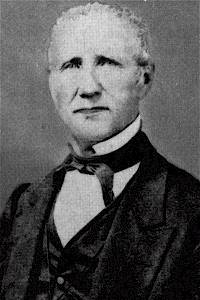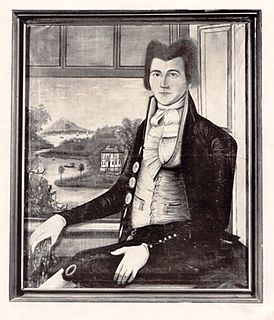
Sacred Harp singing is a tradition of sacred choral music that originated in New England and was later perpetuated and carried on in the American South of the United States. The name is derived from The Sacred Harp, a ubiquitous and historically important tunebook printed in shape notes. The work was first published in 1844 and has reappeared in multiple editions ever since. Sacred Harp music represents one branch of an older tradition of American music that developed over the period 1770 to 1820 from roots in New England, with a significant, related development under the influence of "revival" services around the 1840s. This music was included in, and became profoundly associated with, books using the shape note style of notation popular in America in the 18th and early 19th centuries.

The Southern Harmony, and Musical Companion is a shape note hymn and tune book compiled by William Walker, first published in 1835. The book is notable for having originated or popularized several hymn tunes found in modern hymnals and shape note collections like The Sacred Harp.

William Walker was an American Baptist song leader, shape note "singing master", and compiler of four shape note tunebooks, most notable of which was The Southern Harmony.
James Landrum White was a shape note singing teacher, composer, and a reviser of his father's shape note tunebook known as The Sacred Harp.
The Christian Harmony is a shape note hymn and tune book compiled by William Walker. The book was released in 1866. It is part of the larger tradition of shape note singing.
The New Harp of Columbia is a seven-shape shape note tune book first published in 1867 in Knoxville, Tennessee by Marcus Lafayette Swan. A successor to The Harp of Columbia published by Swan and his father, W.H. Swan, in 1848, The New Harp includes a mixture of hymn tunes, folk hymns, fuguing pieces, and anthems, along with several of Swan's original compositions. The book maintains popularity in East Tennessee, with about 20 singings in 2004.

Ananias Davisson was a singing school teacher, printer and compiler of shape note tunebooks. Davisson was born February 2, 1780 in Shenandoah County, Virginia. He spent his last years living on a farm at Weyer's Cave, about 14 miles from Dayton, Virginia, and died October 21, 1857. He is buried in the Massanutten-Cross Keys Cemetery, Rockingham County, Virginia. Davisson was a member and ruling elder of the Presbyterian Church.
The Kentucky Harmony is a shape note tunebook, published in 1816 by Ananias Davisson. It is generally considered the first Southern shape-note tunebook.
The Union Harmony is a shape note hymn and tune book compiled by William Caldwell. The book was released in 1837, and is part of the larger tradition of shape note singing.
James P. Carrell , of Lebanon, Virginia, was a minister, singing teacher, composer and songbook compiler. He compiled two songbooks in the four-shape shape note tradition.
"The Parting Glass" is a Scottish traditional song, often sung at the end of a gathering of friends. It was purportedly the most popular parting song sung in Scotland before Robert Burns wrote "Auld Lang Syne".
Nehemiah Shumway was an American composer of sacred music, teacher, and farmer.
The Sacred Harp is a shape note tunebook, originally compiled in 1844 by Benjamin Franklin White and Elisha J. King in Georgia and used to this day in revised form by Sacred Harp singers throughout America and overseas. This article is a historical overview and listing of the composers and poets who wrote the songs and texts of The Sacred Harp.
In Sacred Harp music, it is the custom to sing a song in a key chosen for the moment, rather than the one notated in the hymnbook. Pitching is the act of finding such a key. A person to whom this task has been entrusted is called a pitcher or keyer.

Timothy Swan (1758–1842) was a composer and hatmaker born in Worcester, Massachusetts, USA. The son of goldsmith William Swan, Swan lived in small towns along the Connecticut River in Connecticut and Massachusetts for most of his life. Swan's compositional output consisted mostly of psalm and hymn settings, referred to as psalmody. These tunes and settings were produced for choirs and singing schools located in Congregationalist communities of New England. Swan is unique as an early American composer in that he composed secular vocal duets and songs in addition to sacred tunebook music. The tunebook, New England Harmony is a collection of his sacred music compositions, while The Songster's Assistant is a collection of his secular music. Swan was also a poet and teacher of singing.
Aaron Williams (1731–1776) was a Welsh teacher, composer, and compiler of West Gallery music, active in England during the 18th century.
Holy Manna is the hymn tune originally written for "Brethren, We Have Met Together", which is one of the oldest published American folk hymns. Holy Manna is a pentatonic melody in Ionian mode. It was originally published by William Moore in Columbian Harmony, a four-note shape-note tunebook, in 1829, and is attributed to him.







